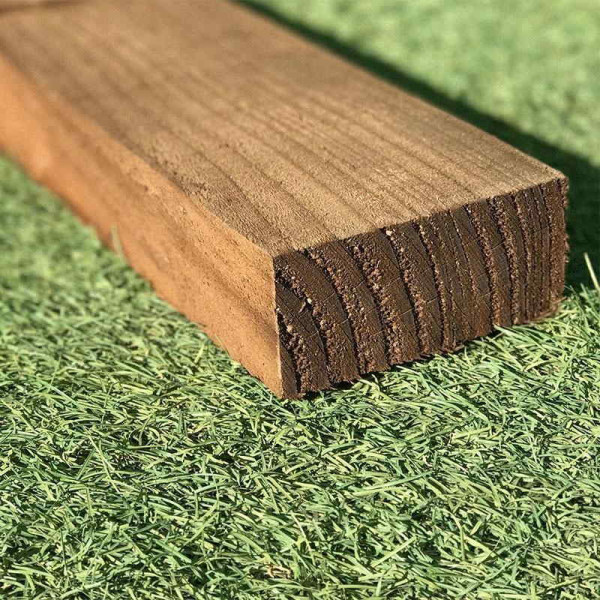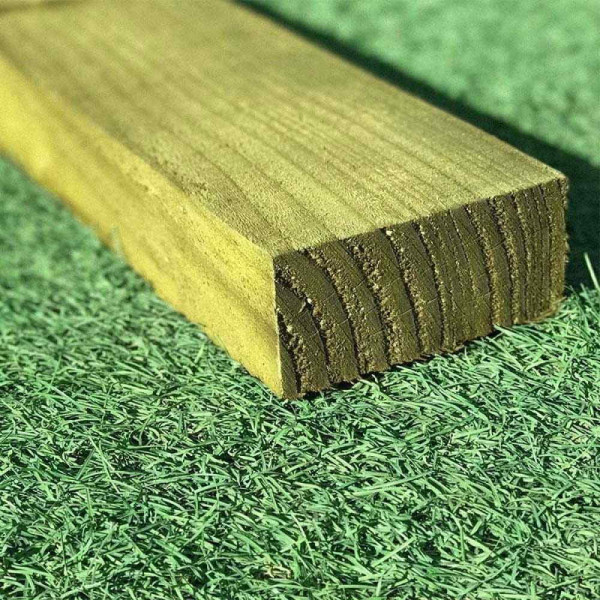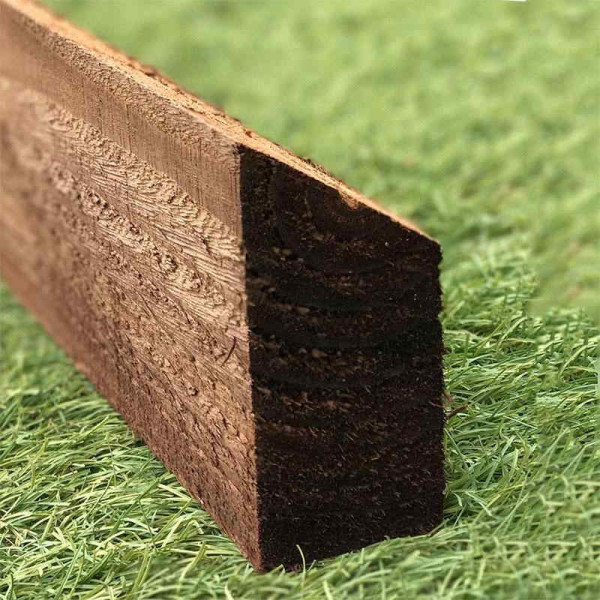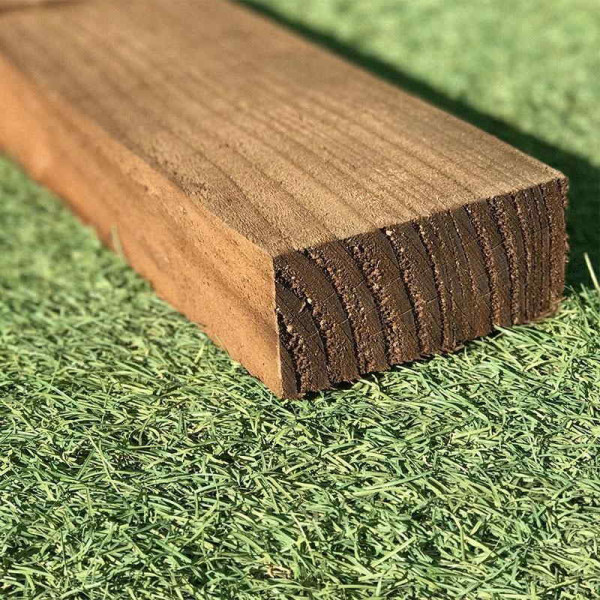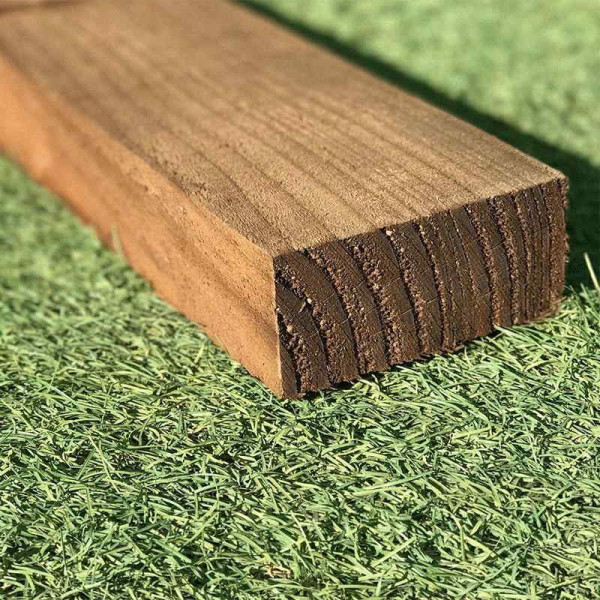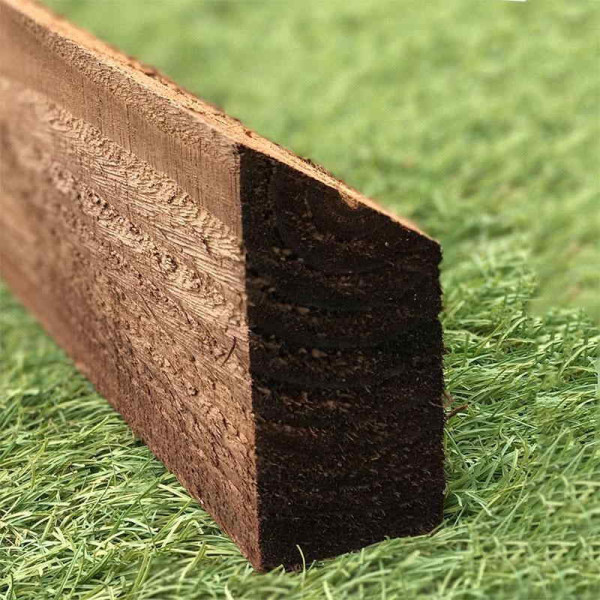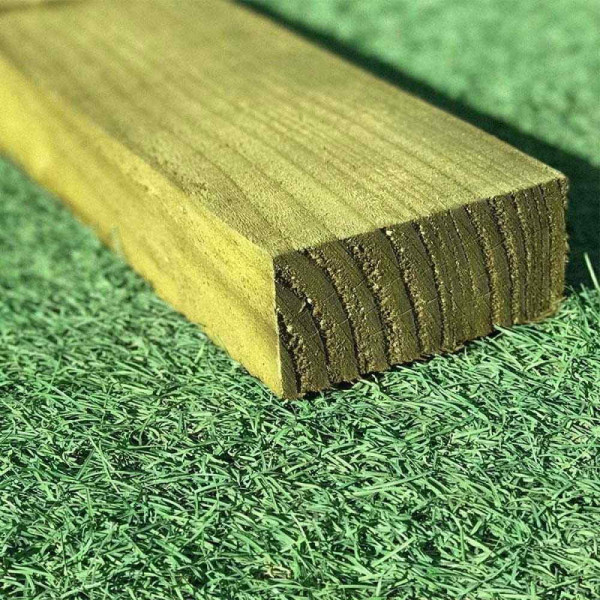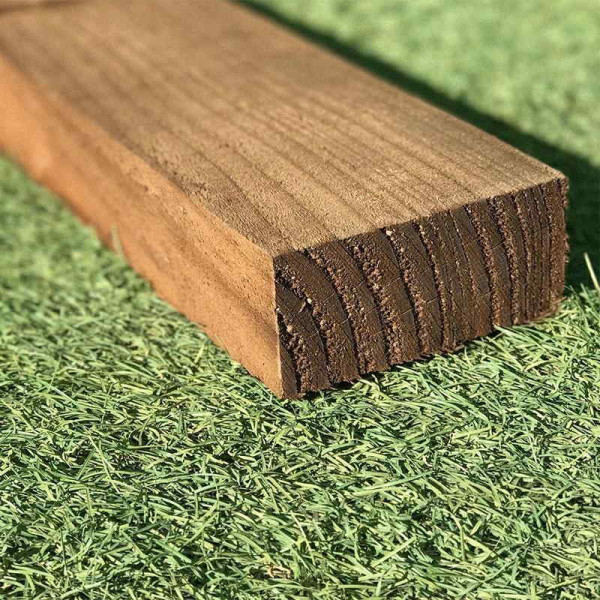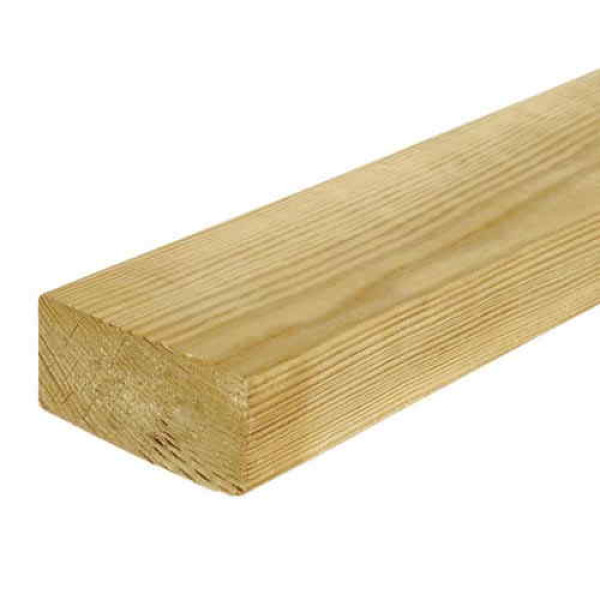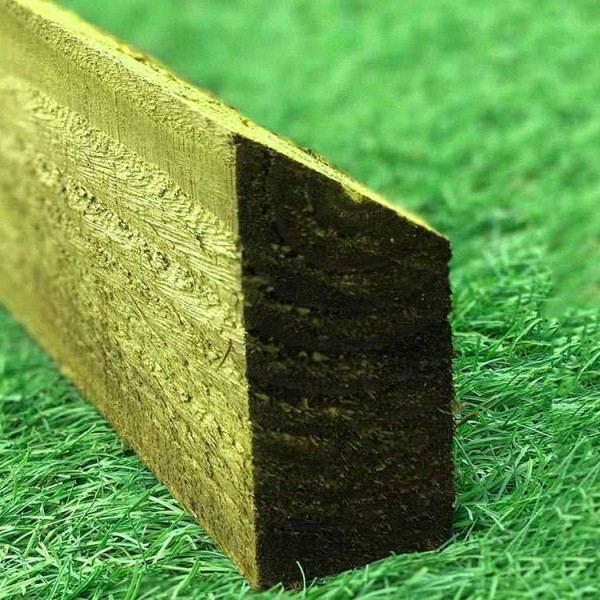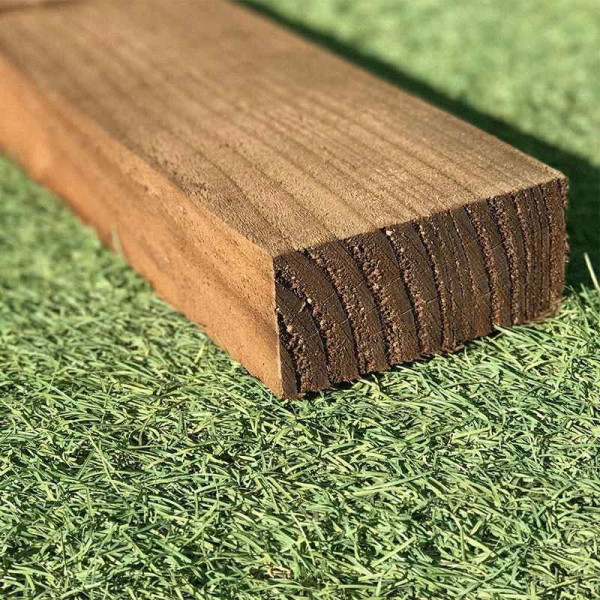Square Rails
Introducing our robust and durable 1.83m x 75x32mm Fence Panel Backrail, the backbone of your garden's privacy and security. Each backrail is meticulously crafted to ensure the utmost strength, providing unparalleled support to your fencing panels.
Pressure-treated with a rich brown finish, this backrail is designed not only for its aesthetic appe..
from
£3.39
Ex Tax:£2.83Introducing our premium 3.6m 87x38mm MOT Rail, a must-have for your next fencing project. Crafted with durability and longevity in mind, this rail has been meticulously pressure treated to ensure it stands the test of time against the elements. Its green treatment not only enhances its resistance to rot and insect infestation but also adds a visual..
from
£10.49
Ex Tax:£8.74The 3.0 metre × 125 mm × 47 mm Cant Rail is crafted from a standard 125 × 47 mm plank that’s sawn diagonally to yield two matching trapezoidal rails—hence the “2EX” designation. Although two rails are produced from each plank, they’re sold individually as single three‑metre lengths, allowing you to order exactly the number you need. Each rail featu..
from
£9.59
Ex Tax:£7.99The 3.0 metre × 125 mm × 47 mm Cant Rail is crafted from a standard 125 × 47 mm plank that’s sawn diagonally to yield two matching trapezoidal rails—hence the “2EX” designation. Although two rails are produced from each plank, they’re sold individually as single three‑metre lengths, allowing you to order exactly the number you need. Each rail featu..
from
£9.59
Ex Tax:£7.99Discover the foundation of robust, long-lasting outdoor structures with our 1.8m 100x47mm Wallplate. Expertly crafted to meet the highest standards of durability and strength, this essential component is ideal for a variety of construction projects. Each wallplate has undergone a rigorous pressure treatment process, ensuring it is well-protected ag..
from
£7.39
Ex Tax:£6.16Introducing our robust 2.4m 87x38mm MOT Rail, a durable and versatile solution for all your fencing needs. Crafted with precision and designed to withstand the elements, this rail is pressure treated in a rich brown hue, ensuring longevity and maintaining its quality through all seasons.
The unique treatment process penetrates deep into the wood, ..
from
£6.89
Ex Tax:£5.74The 2.4 metre × 125 mm × 47 mm Cant Rail is machined from a standard 125 × 47 mm plank that’s sawn diagonally to yield two matching trapezoidal rails—hence the “2EX” designation. Although two rails emerge from each nominal-sized plank, they’re supplied individually as single 2.4 metre lengths, so you can order exactly the quantity you need. Pressur..
from
£7.69
Ex Tax:£6.41Introducing the pinnacle of garden fencing solutions - the 1.83m x 75x32mm Fence Panel Backrail, meticulously crafted for both durability and aesthetic appeal. This premium backrail is pressure treated with a vibrant green finish, ensuring long-lasting protection against rot, decay, and insect damage. Its robust construction and dimensions make it ..
from
£3.39
Ex Tax:£2.83Discover the foundation of durable and robust construction with our 2.4m 100x47mm Wallplate, expertly designed to meet your building needs. This essential component, pressure treated for long-lasting performance, boasts a rich brown hue that adds a touch of elegance to its sturdy functionality. Crafted for resilience, our wallplate ensures that you..
from
£9.79
Ex Tax:£8.16Discover the foundation of durable and robust construction with our 2.4m 100x47mm Wallplate, expertly designed to meet your building needs. This essential component, pressure treated for long-lasting performance, boasts a rich green hue that adds a touch of elegance to its sturdy functionality. Crafted for resilience, our wallplate ensures that you..
from
£9.79
Ex Tax:£8.16The 2.4 metre × 125 mm × 47 mm Cant Rail is crafted from a standard 125 × 47 mm plank that’s sawn diagonally to produce two matching trapezoidal rails—hence the “2EX” designation. Each rail is sold individually as a single 2.4 metre length, allowing you to order precisely the number you need for your project. The subtly tapered profile (wider at th..
from
£7.69
Ex Tax:£6.41Introducing the perfect solution for your structural and fencing needs – our 2.1m 100x47mm Wallplate. Expertly crafted to offer both durability and style, this wallplate is a must-have for any construction or landscaping project.
Finished in a rich brown hue, this product not only adds an aesthetic appeal to your outdoor space but also boasts a pr..
from
£8.59
Ex Tax:£7.16Introducing our robust 3.6m 87x38mm MOT Rail, a durable and versatile solution for all your fencing needs. Crafted with precision and designed to withstand the elements, this rail is pressure treated in a rich brown hue, ensuring longevity and maintaining its quality through all seasons.
The unique treatment process penetrates deep into the wood, ..
from
£10.49
Ex Tax:£8.74Showing 1 to 13 of 13 (1 Pages)



